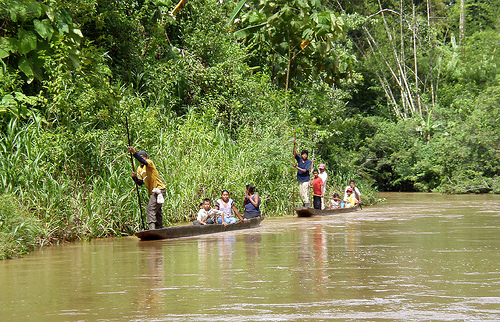
Environmental Conflict and Cooperation in the Corazón
To frame our analysis, it is essential to address the environmental protection trends in Latin America as a whole, Central America as a region, and the Corazón TBR project as a case study that speaks to these broader assessments. The UNEP report on the MBC states that “in Latin America, one of the main challenges is that environmental resource management has traditionally been the preserve of national governments”–a trend that is in tension with the “classical dilemma…that environmental problems do not respect national borders” (Lopez, et. al 2007). This tension is typical around the world for regional environmental projects, but is more troublesome in the Latin American case because of the general political instability of the region.
The Central American regional environmental effort (primarily led by CCAD) became a beacon of hope for Latin America’s troubled history with effective environmental protection. The creation of the MBC has been CCAD’s biggest accomplishment (Lopez et. al 2007). Yet, although the idea has been planted at the regional level, national governments are still struggling to take successful action in integrating their national parks into a cohesive corridor (Global Transboundary Protected Areas Network 2007).
The Corazón is an example of how regional integration has been slowed at the national level. The Honduran government had showed some initial progress, but it was held back by the coup last June (Kaimowitz 2007). Just as the Honduran efforts started to diminish, the Nicaraguan government began to gain traction, as they have recently applied for funding to jumpstart the project’s implementation on the ground (Kaimowitz 2007). The ideas are in place, but measurable implementation is currently nonexistent. With these general trends in mind, we conducted a SWOT analysis specific to the Corazón project to address the project’s current strengths, weaknesses, opportunities and threats.

Recommended Strategies for Improvement
Our analysis leads us to an essential bottom line: there is a great deal of administrative inefficiency in implementing the project, which has been worsened by the challenges of governing transboundary space, managing donor expectations, and incorporating local participation. Although each of these can be considered in their individual right, they are deeply interconnected. If the Corazón TBR project can succeed in managing these challenges simultaneously and successfully, then it will be better able to conduct the regional mitigation of environmental protection in the area. Click here to view our specific recommendations, organized by the three main challenges we have observed in our research.
Conclusion
The Corazón TBR project is promising, but is faced with multiple barriers that have stunted its progress. It is our hope that the Corazón project can overcome these geopolitical challenges to ensure the effective environmental protection of the region. Such a success would not only benefit the local area, but it would also provide CCAD with a model for future transboundary initiatives in Central America and an exemplar to share with the conservationist community around the world.